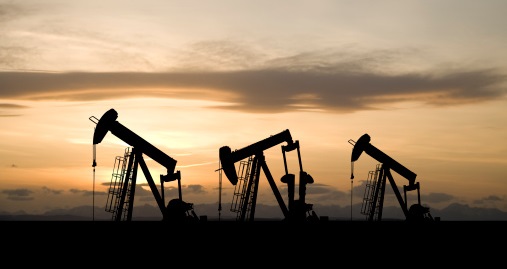It has been a strong start to the month for crude oil markets; WTI has punched above the $68.00 handle and the prior annual high just below it (set back in March) to hit its highest levels since October 2018. Brent, meanwhile, has broken above resistance at the $70.00 level that was capping the gains for most of last month and is now probing the March high at $71.36 per barrel. That is means both are up roughly 2.5% on the month (even though the month only started yesterday). This comes after WTI’s 6.8% and 5.6% rallies and Brent’s 5.6% and 4.2% rallies in the months of April and May, respectively.
Why does crude continue to rise?
The ongoing narrative of oil demand recovery in Western nations as they emerge from the pandemic and enter the summer driving season is providing ongoing support to oil markets. Saudi Arabian Energy Minister Abdulaziz bin Salman, speaking after yesterday’s OPEC+ meeting, summed this optimism up; “the vaccine rollout has gathered pace with around 1.8 billion vaccines administered around the world … This can only lead to further rebalancing of the global oil market” he said, adding that he saw a good recovery in demand in the United States and China.
Returning to yesterday’s OPEC+ meeting; as most oil market analysts had been expecting, oil ministers from the OPEC+ nations agreed to press on with their previously agreed plans to steadily increase output over the next two months, meaning 700K barrels per day in OPEC+ crude oil supply is set to come back online in June and then a further 840K barrels per day in July. The cartel did not give anything away with regards to its output agreement plans beyond July. Some analysts have argued that it makes sense for them to maintain a degree of flexibility/policy ambiguity given key uncertainties currently being faced by oil markets; firstly, US/Iran talks about a return to the 2015 Nuclear Deal (which would see US restrictions on Iranian oil exports removed) are yet to cross the finishing line (though most analysts still suspect a deal will be made) and, secondly, the demand outlook in South/South East Asian countries, which continue to grapple with their worst Covid-19 outbreaks so far since the start of the pandemic, remains highly uncertain. Analysts cited the cartel’s patient stance as supportive for oil markets yesterday.
Further reasons for oil markets to cheer came in the form of bullish new forecasts from OPEC+; the group is now more optimistic than it was a month ago on the prospect of re-balancing in global oil markets and sees global oil demand outstripping global supply for the rest of 2021 and into 2022. This supply/demand imbalance is seen moving as high as 2.5M barrels per day in November, and means that OPEC+ now expects commercial oil reserves held by OECD nations to fall more than 100M barrels below its 2015-2019 average to 2816M barrels in December (the 2015-2019 December average was 2925M barrels).
Finally on yesterday’s OPEC+ event, the meeting only took 20 minutes, which is the shortest affair in the group’s history. Analysts suggest this showed “unity” amongst members, as well as a high degree of confidence in the market’s ongoing recovery. Of course, as past history has shown on numerous occasions, production-restricting cartels such as the OPEC+ group are inherently unstable; thus, unity implies OPEC+ stability (for now), which is in theory good for oil.
Elsewhere and referring back to one of the above-mentioned uncertainties keeping OPEC+ patient, the issue of Iranian supply, markets seemingly remain confident that rising demand will soak up any increase in Iranian output. OPEC Secretary General Barkindo said after yesterday’s OPEC+ meeting that he did not expect higher Iranian oil output to “cause problems” if Tehran and the US are able to reach a deal on a return to the 2015 nuclear deal that would tee up an easing of oil sanctions. “We anticipate that the expected return of Iranian production and exports to the global market will occur in an orderly and transparent fashion” he stated.
With regards to the latest on Iran/US nuclear deal negotiations; Wednesday sees meetings between the relevant parties (which includes the likes of Russia, China, France, Britain, Germany and the EU, who essentially carry messengers between US and Iranian officials given Iran’s refusal to talk directly with the US). After today’s talks conclude, discussions will adjourn for at least one week, reports newswires. Iran’s chief negotiator, called Abbas Araqchi, told Iranian state-run TV that “differences have reached a point where everyone believes these differences are not insolvable” (reported Reuters), before adding that he does not think there will be much delay between today’s meeting and the next round of talks and, like in previous rounds, “we will probably return to Vienna after consulting with our capitals”. Whilst most analysts still expect that a deal will eventually be reached, some have been surprised by the slow progress (just a few weeks ago a deal seemed imminent). Analysts quoted by Reuters said the slow progress of Iran nuclear talks is giving “breathing room” for the demand recovery to catch up before Iranian oil supply returns.
In terms of what is next then for oil, most would agree that things are looking pretty optimistic in the near-term given the above-mentioned themes of recovering global oil demand, OPEC+ patience/vigilance and the slow return of Iranian supply. WTI bulls have therefore likely targeting a gradual move towards the next key area of resistance at the October 2018 highs close to $77.00 per barrel.



